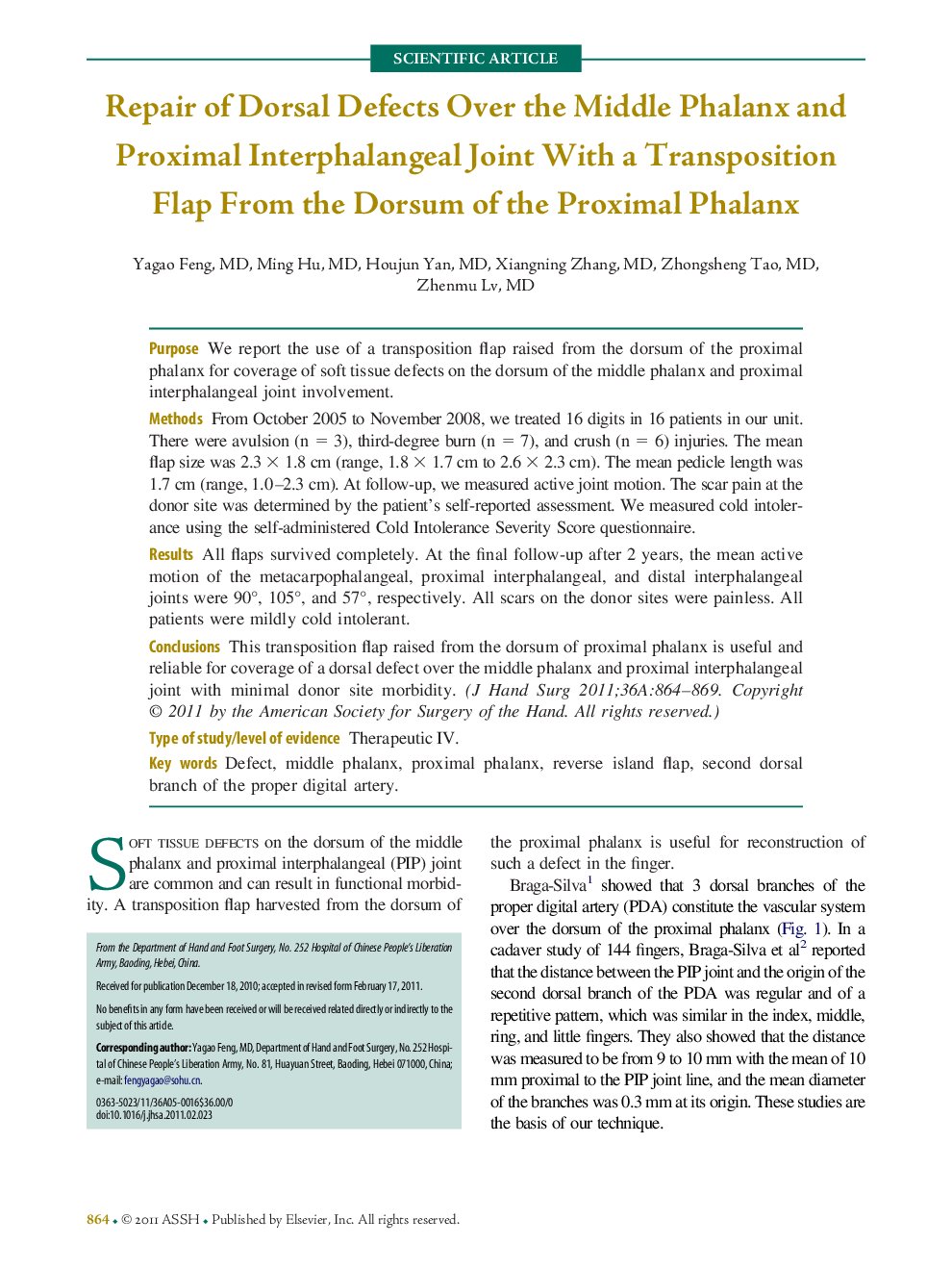| Article ID | Journal | Published Year | Pages | File Type |
|---|---|---|---|---|
| 4070547 | The Journal of Hand Surgery | 2011 | 6 Pages |
PurposeWe report the use of a transposition flap raised from the dorsum of the proximal phalanx for coverage of soft tissue defects on the dorsum of the middle phalanx and proximal interphalangeal joint involvement.MethodsFrom October 2005 to November 2008, we treated 16 digits in 16 patients in our unit. There were avulsion (n = 3), third-degree burn (n = 7), and crush (n = 6) injuries. The mean flap size was 2.3 × 1.8 cm (range, 1.8 × 1.7 cm to 2.6 × 2.3 cm). The mean pedicle length was 1.7 cm (range, 1.0–2.3 cm). At follow-up, we measured active joint motion. The scar pain at the donor site was determined by the patient's self-reported assessment. We measured cold intolerance using the self-administered Cold Intolerance Severity Score questionnaire.ResultsAll flaps survived completely. At the final follow-up after 2 years, the mean active motion of the metacarpophalangeal, proximal interphalangeal, and distal interphalangeal joints were 90°, 105°, and 57°, respectively. All scars on the donor sites were painless. All patients were mildly cold intolerant.ConclusionsThis transposition flap raised from the dorsum of proximal phalanx is useful and reliable for coverage of a dorsal defect over the middle phalanx and proximal interphalangeal joint with minimal donor site morbidity.Type of study/level of evidenceTherapeutic IV.
